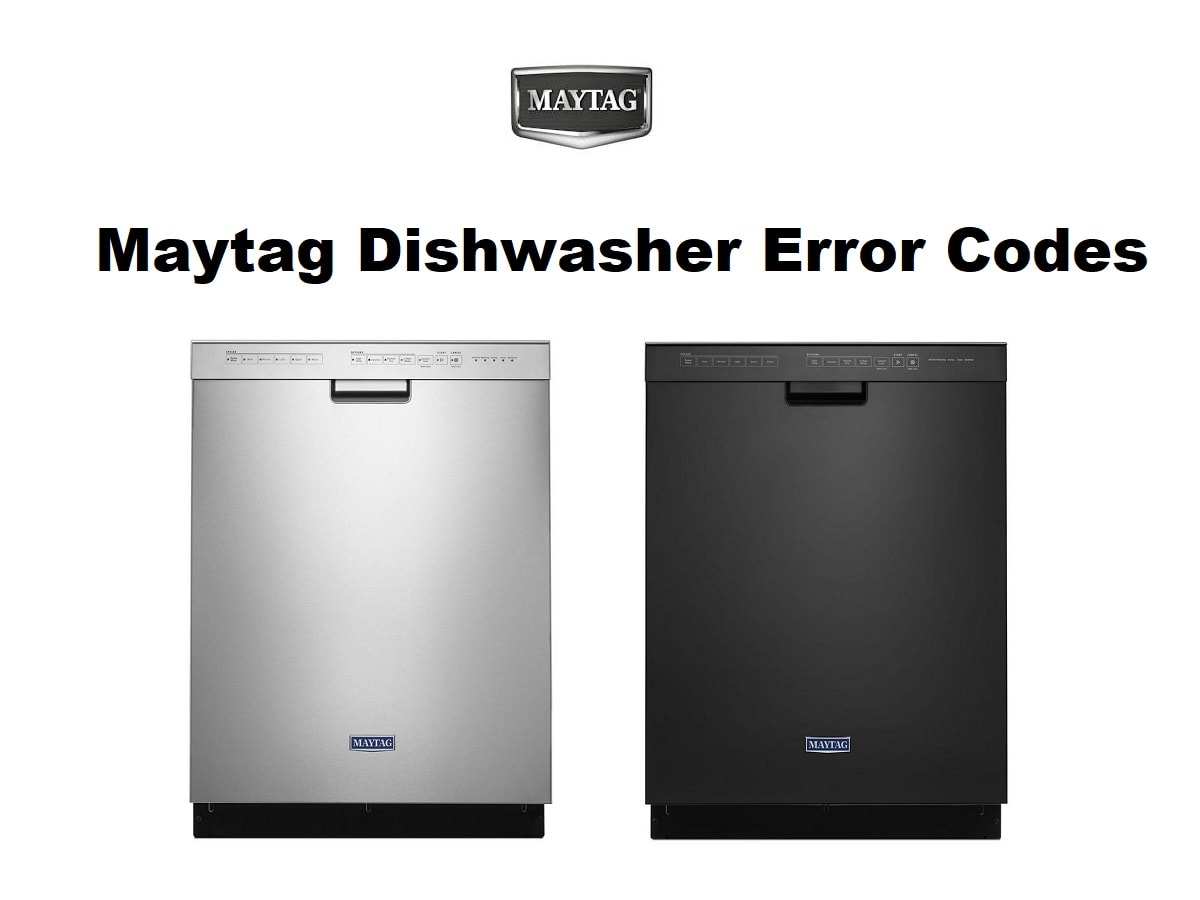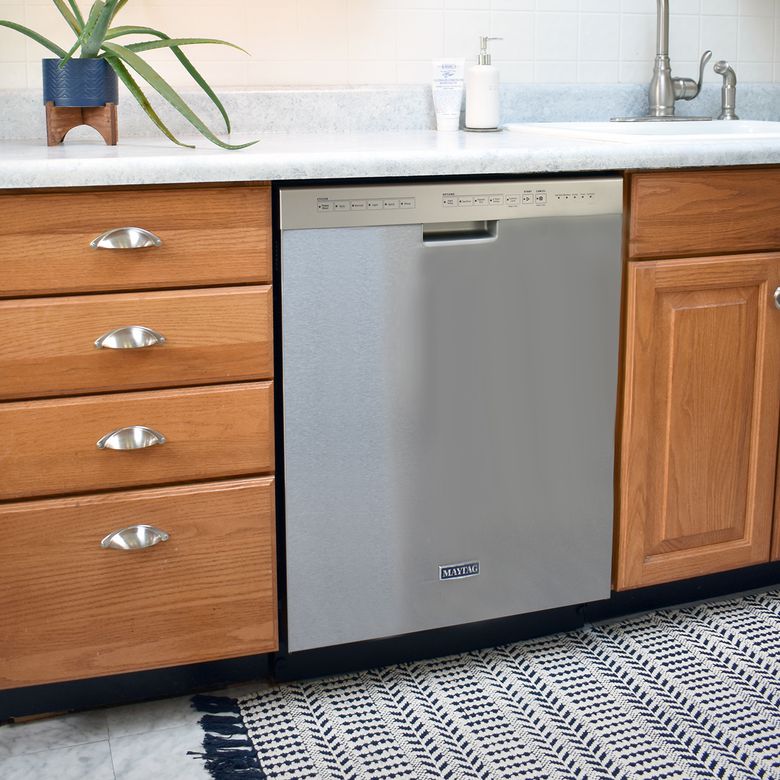
Maytag Dishwasher Troubleshooting

First try the solutions suggested here. If you need further assistance or more recommendations that may help you avoid a service call, refer to the warranty page in this manual and scan the code with your mobile device, or visit www.maytag.com/product_help. In Canada, visit www.maytag.ca.
Problem: Dishwasher Does Not Run
Solution: NOTE: It is normal for the dishwasher to repeatedly pause several times during a cycle. If the START/RESUME light is blinking, press START/RESUME and close the door firmly within 4 seconds. Press and hold HI TEMP WASH for 3 seconds to turn the audible tones on or off. Be sure the door is closed and latched. Be sure you have selected a cycle. See “Cycles and Options Descriptions.” Be sure there is power to the dishwasher. A circuit breaker or fuse might have tripped. If lights other than Start/Resume blink and the unit will not run, you will need to call for service.
Problem: Detergent Remains In The Dispenser Or Tablet Is On Bottom Of Tub
Solution: Check for dishware such as cookie sheets, cutting boards, or large containers, etc., that may be blocking the detergent dispenser from opening properly. Be sure the detergent is fresh and lump free. Be sure the cycle has been completed (green light is on). If it has not been completed, you will need to resume the cycle by pressing START/RESUME and closing the door within 4 seconds.
Problem: Cycle Runs Too Long
Solution: NOTES:
- Efficient dishwashers run longer to save water and energy. Cycle times may increase depending on selections (See “Cycles and Options Descriptions” for estimated cycle times.)
- A water heater setting of 120°F (49ºC) is best. The dishwasher will delay longer while heating cooler water. Try the Quick Wash cycle. Run the hot water at a faucet close to the dishwasher before starting the cycle.
Problem: Dishwasher Not Drying
Solution: NOTE: Plastic and items with nonstick surfaces are difficult to dry because they have a porous surface, which tends to collect water droplets. Towel drying may be necessary. Use of rinse aid along with the Heated Dry and Sanitize option will provide the best drying and avoid excess moisture in the dishwasher interior. Proper loading of items can affect drying. (See specific loading instructions within this guide.) Glasses and cups with concave bottoms hold water. This water may spill onto other items when unloading.
- Unload the bottom rack first.
- Place these items on the more slanted side of the rack for improved results.
Problem: Will Not Fill
Solution: Be sure the water is turned on to the dishwasher. Check that the float is free from obstructions. Check for suds in the dishwasher. If foam or suds are detected, the dishwasher may not operate properly or may not fill with water.
Problem: Water Remains In The Tub/ Will Not Drain
Solution: Be sure the cycle has been completed (the green light is on). If the cycle has not been completed, you will need to resume the cycle by pressing START/RESUME and closing the door within 4 seconds. If dishwasher is connected to a food waste disposer, be sure the knockout plug has been removed from the disposer inlet. Check for kinks in the drain hose. Check for food obstructions in the drain or garbage disposer. Check the house fuse or circuit breaker.
Problem: Hard Water
Solution: NOTE: Extremely hard water mineral deposits can cause damage to the dishwasher and make it difficult to achieve good cleaning. A water softener is strongly recommended if the hardness is 15 grains or more. If a water softener is not installed, the following steps may help: Use a commercial cleaner designed for dishwashers once per month. Always use a rinse aid. Always use a high-quality, fresh detergent. Use a detergent booster/water softener additive designed for dishwashers.
Problem: Odors
Solution: Run a vinegar rinse through the dishwasher by putting 2 cups (500 mL) of white vinegar in an upright glass measuring cup in the lower rack. Run a normal cycle with the Heated Dry option turned off. Do not use detergent.
Problem: Noisy
Solution:
- Surging sounds can occur periodically throughout the cycle while the dishwasher is draining.
- Normal water valve hissing may be heard periodically.
- A normal snap sound may be heard when the detergent dispenser opens during the cycle and when the door is opened at the end of the cycle.
- Improper installation will affect noise levels. Be sure the filters are properly installed.
A thumping sound may be heard if items extend beyond the racks and interfere with the wash arms. Readjust the dishware and resume the cycle.
Problem: Food Soils Remain On Dishes
Solution: Be sure the dishwasher is loaded correctly. Improper loading can greatly decrease the washing performance. See “Prepare and Load the Dishwasher” in the “Dishwasher Use” section. Select the proper cycle and option for the type of soils. PowerBlast™ with the Sanitize option can be used for tougher loads. Be sure the incoming water temperature is at least 120°F (49ºC). Use the proper amount of fresh detergent. More detergent is needed for heavier-soiled loads and hard water conditions. Scrape food from dishes prior to loading (do not prerinse).
Problem: Did Not Sanitize
Solution: If the sanitized light is blinking, the load is NOT sanitized. The cycle was interrupted in the final rinse, or the water heater is set too low. Set the water heater to 120ºF (49ºC).
Problem: Damage To Dishware
Solution: Improper loading can cause dishes to become chipped or damaged. See specific loading instructions within this guide.
Problem: Blinking Lights
Solution: If the START/RESUME light is blinking, press START/RESUME and close the door within 4 seconds. If the Clean light or any other lights are blinking and the dishwasher will not run, call for service.
Comments
Post a Comment